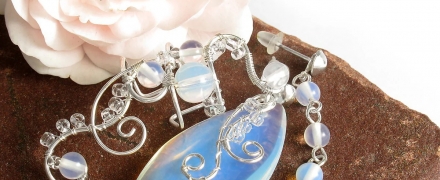open 10 am - 7 pm
laboratory is closed
What is a moonstone?

"Moonstone" refers to iridescent varieties of potassium feldspars - orthoclase and sanidin. Sometimes, an irrigating variety of plagioclases is referred to as “moonstone” —whiteorite (albite-oligoclase). The name "moonstone" is associated with the irisization in a round cabochon, resembling the dim light of the moon. The effect of irisation in the “moonstone” is associated with structurally oriented thin-plate inclusions of plagioclase-albite, the so-called microscopic pertite growths.
It is believed that the "moonstone" gives owners health, longevity, wealth and hope for the future.
В геммологической практике бывают весьма увлекательные случаи с диагностикой ювелирных вставок
Но помимо редкости цвета и высокой стоимости таких камней, многие розовые камни выделяются одной замечательной особенностью – они проявляют плеохроизм, то есть в зависимости от положения осмотра камня он может иметь дополнительные оттенки – оранжевый или пурпурный.
Currently, gemstones are produced by two fundamentally different technological methods - the High Pressure - High Temperature method (“HPHT”, High-pressure & High-temperature) and the Chemical Vapor Deposition (“CVD”, Chemical vapor deposition) method. The "HPHT" method is the most tested classical synthesis method, which can be used both carbon deposition on diamond from flux melts and catalytic reactions. In "CVD" synthesis, diamond growth occurs on a seed during carbon deposition mainly from a gaseous medium at relatively low temperatures and pressures.
Jewelry and precious stones are just such a category of goods, when buying which you need to pay attention to many criteria.
Sogdianite is a rather rare mineral and more often it can be found as a collection material (moreover, in systematic collections), and it is extremely rare in jewelry.






